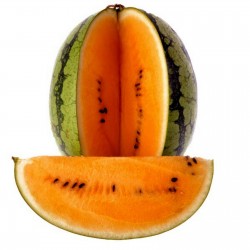Menu
-
MenuGeri
- Home
-
Kategoriler
-
-
Kategoriler
-
Sebze tohumları
-
Ülkelere Göre Çeşitler
- Ermenistan'dan çeşitler
- BH'den Çeşitler
- Hırvatistan'dan Çeşitler
- Fransa'dan Çeşitler
- Almanya'dan Çeşitler
- Yunanistan'dan Çeşitler
- Macaristan Çeşitleri
- Hindistan'dan Çeşitler
- İtalya'dan çeşitleri
- Japonya'dan Çeşitler
- Kuzey Makedonya çeşitleri
- Peru Çeşitleri
- Rusya'dan Çeşitler
- Sırbistan'dan Çeşitler
- Slovenya'dan Çeşitler
- İspanya Çeşitleri
- Tayland çeşitleri
- Türkiye'den Çeşitler
- ABD'den Çeşitler
- Domates tohumları
- Mısır tohumları
- Kabak ailesi
- Fasulye ailesi
- Salatalık tohumları
- Dolma biber tohumları
- Havuç ailesi
- Soğan ailesi
- Marul tohumları
- Patates ailesi
- Lahana ailesi
- Turp tohumları
- Pancar ailesi
- Karpuz tohumları
- Kavun tohumları
- Karnabahar tohumları
- Ayçiçeği ailesi
-
Ülkelere Göre Çeşitler
- Meyve tohumları
- Acı biber tohumları
- Tıbbi bitki tohumları
- Tırmanma bitki tohumları
- Ağaçlar - Çalı tohumları
- Palmiye tohumları
- Süs bitkileri tohumları
- Tütün tohumları
-
Sebze tohumları
-
-
-
-
- YENİ ÜRÜNLER
- Hesap oluştur
- Teslimat - Ödeme
- FAQ
- Ana Sayfa
-
- Büyük tohum paketleri
- Dev bitki tohumları
- Sebze tohumları
- Ülkelere Göre Çeşitler
- Ermenistan'dan çeşitler
- BH'den Çeşitler
- Hırvatistan'dan Çeşitler
- Fransa'dan Çeşitler
- Almanya'dan Çeşitler
- Yunanistan'dan Çeşitler
- Macaristan Çeşitleri
- Hindistan'dan Çeşitler
- İtalya'dan çeşitleri
- Japonya'dan Çeşitler
- Kuzey Makedonya çeşitleri
- Peru Çeşitleri
- Rusya'dan Çeşitler
- Sırbistan'dan Çeşitler
- Slovenya'dan Çeşitler
- İspanya Çeşitleri
- Tayland çeşitleri
- Türkiye'den Çeşitler
- ABD'den Çeşitler
- Domates tohumları
- Mısır tohumları
- Kabak ailesi
- Fasulye ailesi
- Salatalık tohumları
- Dolma biber tohumları
- Havuç ailesi
- Soğan ailesi
- Marul tohumları
- Patates ailesi
- Lahana ailesi
- Turp tohumları
- Pancar ailesi
- Karpuz tohumları
- Kavun tohumları
- Karnabahar tohumları
- Ayçiçeği ailesi
- Ülkelere Göre Çeşitler
- Meyve tohumları
- Acı biber tohumları
- Tıbbi bitki tohumları
- Tırmanma bitki tohumları
- Ağaçlar - Çalı tohumları
- Muz tohumları
- Palmiye tohumları
- Süs bitkileri tohumları
- Tütün tohumları
- Çiçek tohumları
- Kaktüs tohumları
- Su bitki tohumları
- Ekim Talimatları
- Meyve ve sebze şekil
- Mantar miselyumu
- Bitki soğanları
- Bambu tohumları
- Ayurveda Bitkileri
- F1 hibrit tohumları
- Ambalaj ve malzeme
- Cold-resistant plants
- Bitki bakımı
- Organik baharatlar
- Teslimat - Ödeme
- PayPal ve Kart ödemesi yok X
Last Product Reviews
Out of the two seeds, one germinated and the other one was dead and floatin...
By
 Riikka H on 07/03/2024
Riikka H on 07/03/2024
Verified Purchase
Çok satanlar
1308 adet ürün var.
Toplam 1308 üründen 406-420 arası gösteriliyor

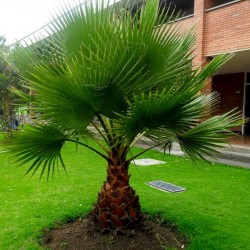
California Fan Palm Seeds...
Fiyat
€1,95
(SKU: PS 1)
Seeds Gallery EU,
5/
5
<h2 class=""><strong>Washingtonia Seeds California Fan Palm</strong></h2>
<h2><span style="color: #ff0000;"><strong>Price for Package of 3 seeds.</strong></span></h2>
<p>Washingtonia Filifera is a palm native to the southern and southwestern USA states and northwest Mexico. This palm grows up to 23 m (exceptionally 30 m) in good growing conditions. The leaves have a petiole up to 2 m long, bearing a fan of leaflets 1.5-2 m long, with white, thread-like fibers between the segments. When the leaves die they bend downwards and form a skirt around the trunk. Washingtonia filifera can live from 80 to 250 years or more and is <strong>reported to be cold hardy to -12C.</strong></p>
<table cellspacing="0" cellpadding="0" border="1">
<tbody>
<tr>
<td colspan="2" width="100%" valign="top">
<p><span style="color: #008000;"><strong>Sowing Instructions</strong></span></p>
</td>
</tr>
<tr>
<td valign="top" nowrap="nowrap">
<p><span style="color: #008000;"><strong>Propagation:</strong></span></p>
</td>
<td valign="top">
<p><span style="color: #008000;">Seeds</span></p>
</td>
</tr>
<tr>
<td valign="top" nowrap="nowrap">
<p><span style="color: #008000;"><strong>Pretreat:</strong></span></p>
</td>
<td valign="top">
<p><span style="color: #008000;">soak in water for 3-4 hours</span></p>
</td>
</tr>
<tr>
<td valign="top" nowrap="nowrap">
<p><span style="color: #008000;"><strong>Stratification:</strong></span></p>
</td>
<td valign="top">
<p><span style="color: #008000;">0</span></p>
</td>
</tr>
<tr>
<td valign="top" nowrap="nowrap">
<p><span style="color: #008000;"><strong>Sowing Time:</strong></span></p>
</td>
<td valign="top">
<p><span style="color: #008000;">all year round</span></p>
</td>
</tr>
<tr>
<td valign="top" nowrap="nowrap">
<p><span style="color: #008000;"><strong>Sowing Depth:</strong></span></p>
</td>
<td valign="top">
<p><span style="color: #008000;">1 cm</span></p>
</td>
</tr>
<tr>
<td valign="top" nowrap="nowrap">
<p><span style="color: #008000;"><strong>Sowing Mix:</strong></span></p>
</td>
<td valign="top">
<p><span style="color: #008000;">Coir or sowing mix + sand or perlite</span></p>
</td>
</tr>
<tr>
<td valign="top" nowrap="nowrap">
<p><span style="color: #008000;"><strong>Germination temperature:</strong></span></p>
</td>
<td valign="top">
<p><span style="color: #008000;">min. 20 ° C</span></p>
</td>
</tr>
<tr>
<td valign="top" nowrap="nowrap">
<p><span style="color: #008000;"><strong>Location:</strong></span></p>
</td>
<td valign="top">
<p><span style="color: #008000;">bright + keep constantly moist not wet</span></p>
</td>
</tr>
<tr>
<td valign="top" nowrap="nowrap">
<p><span style="color: #008000;"><strong>Germination Time:</strong></span></p>
</td>
<td valign="top">
<p><span style="color: #008000;">until it germinates </span></p>
</td>
</tr>
<tr>
<td valign="top" nowrap="nowrap">
<p><span style="color: #008000;"><strong>Watering:</strong></span></p>
</td>
<td valign="top">
<p><span style="color: #008000;">Water regularly during the growing season</span></p>
</td>
</tr>
<tr>
<td valign="top" nowrap="nowrap">
<p><span style="color: #008000;"><strong> </strong></span></p>
</td>
<td valign="top">
<p><br /><span style="color: #008000;"><em>Copyright © 2012 Seeds Gallery - Saatgut Galerie - Galerija semena. </em><em>All Rights Reserved.</em><em></em></span></p>
<div><span style="color: #008000;"><em> </em></span></div>
</td>
</tr>
</tbody>
</table>
<script src="//cdn.public.n1ed.com/G3OMDFLT/widgets.js"></script>
PS 1 (3 S)

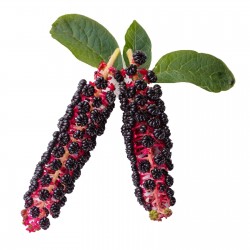
Amerika tohumlar...
Fiyat
€2,25
(SKU: V 75)
Seeds Gallery EU,
5/
5
<h2><strong>Amerika tohumlar (Phytolacca Americana)</strong></h2>
<h2><span style="color: #ff0000;"><strong>10 tohum paketi için fiyat.</strong></span></h2>
<p>Phytolacca americana , Amerikan pokeweed veya basitçe amerikaüzümü , bir olan otsu çok yıllık bitki yabani ot kesesi aile içinde Phytolaccaceae yüksekliğinde 8 ft (2.4m) kadar büyüyor. Bu doğu ABD'ye yerli ve önemli bir toksisitesi yoktur.</p>
<p>Çok basit sahiptir yaprakları kırmızı veya morumsu yeşil üzerine sapları ve büyük beyaz bir kazık kök . Çiçekler neredeyse siyaha mor ardından beyaza yeşil meyveler gibi ötücü bir besin kaynağıdır gri catbird , kuzey bülbülü , kuzey kardinal ve kahverengi thrasher yani türe, hem de diğer kuşlar ve bazı küçük hayvanlar ( onun memeli etkilenmez toksinler ).</p>
<p>Pokeweed doğu özgüdür Kuzey Amerika , Midwest ve Körfez Kıyısı uzak Batı'da daha dağınık nüfusa sahip. Aynı zamanda Avrupa ve Asya'nın bazı bölgelerinde doğallaştırılıyorsa. Bu büyük olarak kabul edilir haşere türleri çiftçiler tarafından. Ayrıca, pokeweed yoluyla insan ve hayvan popülasyonlarının için bir tehlike teşkil zehirlenme ; toksisite bitki olgunlaştıkça artan seviyeleri ve zehirli meyve. Bu çok zehirli mor-kırmızı olgun meyve tadına isteyebilir çocuk ve hayvanlara tehlike teşkil . Buna rağmen bir olarak kullanılan süs içinde bahçecilik ve onun çeşitli için faiz kışkırtır doğal ürünler onun için, (toksinler ve diğer sınıfların) ekolojik rolü, onun tarihsel rolü geleneksel tıp ve bazı yardımcı program için biyomedikal araştırmalar ( örneğin çalışmalarında mitojeni ). Vahşi doğada kolayca yetişen bulunursa otlaklar son zamanlarda alanları temizlenir ve ormanlık açıklıklar, kenar habitatları böyle fencerows boyunca olduğu gibi, ve atık yerlerde.</p>
<p>Şekercıboyası üyesidir Phytolaccaceae veya daha geniş bir yabani ot kesesi ailesi ve yerli otsu çok yıllık bitki olduğunu yüksekliğinde 8 feet (2 metre) kadar büyüyen, büyüktür. Birkaç dallarına biri kalın, beyaz, etli tacı gelen büyümek kazık kök , her biri bir "şişman, pürüzsüz, biraz morumsu yeşil sapını;" basit, bütün yaprak uzun petiollere sahip dönüşümlü kök boyunca düzenlenmiştir.</p>
<p>Pokeweeds sadece kızıl suyu ile etli, 10 hücreli, mor-to-yakın-siyah dut bulunan kendi tohum (büyük parlak siyah ve lens şeklinde) tarafından yeniden. Çiçekler mükemmel , radyal simetrik 4-5 sepals ve hiçbir yaprakları ile, beyaz veya yeşil. Çiçekler uzun kümeler adlandırılan gelişir racemes . Tohumlar uzun sürdürebilmesi ve toprakta yıllar sonra filizlenerek.</p>
<p>Kuşlar çilek bulunan doğal kimyasal etkilenmeyen tohum dispersiyon, (aşağıya bakınız) ve bunların yemek. Tohum aynı zamanda ticari tohum (örneğin, bitkisel tohum paketleri) bulunur. çilek onun toksinler etkilenmeyen ve ötücü kuş türleri ve küçük hayvanlar için iyi bir besin kaynağı olduğu bildirilmektedir. kuşlar vasıtasıyla Dağıtım aksi pokeweed tarafından doldurulan olmasaydı alanlarda "tek, izole bitkilerin" </p>
<h2>Toksisite, zehirlenme ve ölüm</h2>
<p>bitkinin tüm parçaları zehirlidir ve insan ve memeli sağlığına risk oluşturmaktadır. Özetle, zehirli ilkeler olgun meyve sonra yapraklarında sonra, anaç en yüksek konsantrasyonlarda bulunan ve sapları ve vardır. Bitki genellikle (önemli toksisite bile yeşil iken var) meyveler hariç, vadeli daha toksik alır.</p>
<p>Çocuklar çilek kümeler tarafından çekebilir. Ohio Tarımsal Araştırma ve Geliştirme Merkezi (OARDC) dikkat</p>
<blockquote>
<p>"Çocuklar en sık çiğ meyveleri yiyerek zehirlenmiş olan. Bebekler özellikle duyarlıdır ve sadece birkaç çiğ meyveleri yeme öldü. Yetişkinler bazen ölümcül, zehirlendiniz, yanlış hazırlanmış yaprakları ve sürgünleri yiyerek, kök kısmı hasat edilir özellikle çekimlerin ve yenilebilir bir yumru kökü için kök mistaking tarafından. insanlarla Araştırma ayrıca pokeweed suyu deri yoluyla absorbe edilebilir beri yaygın şekercıboyası. temasını mutasyonları (muhtemelen kanserine yol açan) ve doğum kusurlarına neden olabilir göstermiştir çıplak deriyle bitki parçaları kaçınılmalıdır."</p>
</blockquote>
<p>Şekercıboyası hamilelik ve çocuk acil tedavi gerektirebilir bile bir dut tüketen sırasında kaçınılmalıdır. Bitki özsuyu neden olabilir dermatit hassas kişilerde.</p>
<p>Kuşlar bu zehre karşı görünüşte etkilenmez. Bitki hayvanlara kabul edilebilir değildir ve başka küçük kullanılabilir sürece önlenir, ya da kirlenmiş saman ise, ancak atlar, koyunlar ve sığırlar taze yaprakları veya yeşil yem yiyerek zehirlenmiş edilmiştir ve domuzlar kökleri yiyerek zehirlenmiş edilmiştir .</p>
<p>Yabani ot kesesi tüketiminden kaynaklanan İnsan ölümleri nadir olmakla vakaları kusmanın ve arınmadan bilinmektedir ve bir meyve suyu tohumları ezilmiş tüketilen bir çocuk öldüğü bildirildi. Ölüm meydana gelirse, bu genellikle solunum felci nedeniyle.</p>
<p>Tarihsel olarak, pokeweed zehirlenmeleri özellikle antiromatizmal hazırlıkları olarak tentür kullanımından ve karıstırılma meyveler ve kökler alımından itibaren, 19. yüzyılda doğu Kuzey Amerika'da yaygındı parsnip , yerelması , ya karaturp .</p>
<h3>Semptomlar ve zehirlenmesinden tepki</h3>
<p>Owen devletler:</p>
<blockquote>
<p>içten alınan "Eğer, pokeweed yavaş etkili ama şiddetli bir kusturucu olduğunu. Kusma genellikle bitkinin ya da parçalarının sonra yaklaşık 2 saat yemiş edilmiştir başlar. tasfiye, spazmlar, bazen kasılmalar içinde zehirlenme sonucu şiddetli durumlarda. Ölüm meydana gelirse, bunun nedeni solunum organlarının felci için genellikle. hayvan veya insan zehirlenmesi vakaları bir veteriner veya bir doktor tarafından ele alınmalıdır."</p>
</blockquote>
<p>OARDC personel bilim adamları pokeweed gelen zehirlenme acil ve daha sonraki semptomlar dahil "yanan ağız, salivasyon hissi, mide-bağırsak krampları, kusma ve kanlı ishal" ve o tüketilen miktarın bağlı olarak daha ciddi belirtiler ortaya çıkabilir dahil olduğuna dikkat "anemi, değiştirilmiş kalp atış hızı ve solunum, solunum yetmezliği konvülsiyonlar ve ölüm." bitki veya ekstrelerinin sadece küçük miktarlarda yenilmesi durumunda, insanlar ve hayvanlar 1 ila 2 gün içinde geri alabilirsiniz.</p>
<h2>Habitat ve aralık</h2>
<p>Amerikaüzümü doğu özgüdür Kuzey Amerika , Midwest, Körfez Kıyısı ve ABD'nin Batı kıyısı devletler.</p>
<h2>morfoloji</h2>
<div>
<div><img alt="Amerika tohumlar (Phytolacca Americana)" src="https://upload.wikimedia.org/wikipedia/commons/thumb/e/e6/Phytolacca_americana_cluster_-_single.jpg/220px-Phytolacca_americana_cluster_-_single.jpg" width="220" height="391" style="border-width: 1px;" title="Amerika tohumlar (Phytolacca Americana)" />
<div>
<div></div>
Amerika üzümü meyveleri bir küme</div>
</div>
</div>
<p><em>Bitki türü</em> : Çok yıllık otsu bitki 10 feet (3 metre) bir yüksekliğe ulaşır, ancak genellikle 6 ft (2 m) 4 ft (1.2 m). Kök bu boyutunu destekleyecek kadar büyük büyümeden Ancak, bitki birkaç yaşında olmalıdır. Kök bitki olgunlaştıkça sıklıkta kırmızıdır. Çilek ağırlığı sezonunda daha sonra yayılan, yatay forma dönüşür erken sezonunda dik, dik merkez kök vardır. Bitki geri köklerine her kış ölür. Kök hazneli sahiptir ilik .</p>
<p><em>Yapraklar</em> : Yaprakları orta ile iri dokulu alternatif olan porozite . Yapraklar uzunluğu on altı inç ulaşabilirsiniz. Her yaprak tamamını olduğunu. Yapraklar bazı hoş olmayan bir koku olarak karakterize ne yeşil orta ve düzgündür.</p>
<p><em>Çiçekler</em> : çiçek dik organlarındaki ile 5 normal parçaya sahip ve yukarı geniş 0.2 inç (5 mm) için vardır. Bunlar bitki meyve olarak karartmak dik veya sarkık salkımda beyaz pedicels ve peduncles, true yaprakları olmadan beyaz taçyaprağı benzeri sepals var. Blooms ilk yaz başında görünür ve erken sonbaharda içine devam ediyor.</p>
<p><em>Meyve</em> : düzenlenen bir parlak koyu mor dut salkım şeklinde pembe üzerinde kümeler pedicels pembe ile pedünkül . Meyveler olmadan pedicels ayırt edici yuvarlak beş parça kalikse var. Meyve düz girintili üst ve alt yuvarlaktır. Olgunlaşmamış çilek beyaz dönüm, yeşil ve mor ardından siyahımsı vardır.</p>
<p><em>Kök</em> : Kalın merkezi kazık kök derin büyür ve yatay yayılır. Hızlı büyüme. Tan korteks, beyaz hamuru, kökçüklerin ılımlı sayısı. Enine kesilmiş kök dilimleri konsantrik halkalar göstermektedir. Resim azot sabitleme yeteneği.</p>
<h2>Doğal ürünler</h2>
<p>Çeşitli kaynaklardan bitkinin önemli kimyasal bileşenler tartışır. Iowa State Üniversitesi Owen ve "tüm yabani ot kesesi bitki saponin benzer bir zehirli madde içeriyor" belirtiyor "alkaloit phytolaccine da az miktarda oluşur." National Library of Medicine at Heller iki doğal ürünler, alkaloit notları phytolaccatoxin ve phytolaccagenin insan zehirlenmesi katkıda gibi. <em>Kanadalı Zehirli Bitkiler Bilgi Sistemi</em> phytolaccine ve phytolaccatoxin hakkında bilgi yankılanır.</p>
<p>Diğer toksik bileşenler şunlardır triterpen saponinleri triterpen genins göre, belirtildiği gibi phytolaccagenin ve jaligonic asit , phytolaccagenic asit (phytolaccinic asit), esculentic asitve pokeberrygenin ve phytolaccasides A, B, D, E, ve G ve phytolaccasaponins B, E ve G</p>
<p>Toksisite olarak karakterize edilmemiş pokeweed çilek izole triterpen saponinleri içerir esculentoside E ; ve phytolaccasides C ve F ve oleanolik asit ve 3-okso-30-karbometoksi-23-noro! ean-12-en-28-oik asit. İzole triterpen alkoller, α-spinasterol ve glikozit , α-spinasteryl-β- <small>D</small> glukosit ve palmitil in türevi, 6-palmytityl-α-spinasteryl-6- <small>D</small> glukosit, hem de benzer fonksiyonel olarak stigmasterolün türevi, 6-palmitil-Δ7-stigmasterol-Δ- <small>D</small>glukosit.</p>
<p>Dışında nişasta ve çeşitli tanenler , pokeweed izole diğer küçük molekül, doğal ürünler canthomicrol , astragalin ve karyofillen . Tohumlar fenolik aldehit içeren kafeik aldehit .</p>
<p>İlgi konusu proteinleri çeşitli içerir lektinler protein PAP-R ve pokeweed mitojen (PWM), hem de bir toksik glikoproteini .</p>
<h2>Kullanımları</h2>
<h3>Bahçe ve ekolojik yarar</h3>
<p>Amerikaüzümü çilek gibi ötücü için iyi bir besin kaynağı olduğu bildirilmektedir gri catbird ( <em>Dumetella carolinensis</em> ), kuzey bülbülü ( <em>Mimus polyglottos</em> ), kuzey kardinal ( <em>Cardinalis kardinaller</em> ), kahverengi thrasher ( <em>Toxostoma rufum</em> (), yas güvercin dahil diğer kuş türlerinin <em>Zenaida macroura</em> ) ve sedir waxwing ( <em>Bombycilla cedrorum</em> ). Onun toksinlerin görünüşte toleranslı Küçük memeliler rakun, keseli sıçan, kırmızı ve gri tilki, beyaz ayaklı fare bulunmaktadır.</p>
<p>Amerika üzümü bazı larvalarının bir ara besin kaynağı olarak kullanılır <em>Lepidoptera</em> türü dahil olmak üzere, dev pars güvesi ( <em>Hypercompe Scribonia</em> ).</p>
<p>Bazı pokeweeds esas olarak kendi cazip meyveler için, süs bitkisi olarak yetiştirilir. Çeşitlerin bir dizi büyük meyve için seçilmiştir Panicles .</p>
<h3>Halk ve alternatif tıp</h3>
<p>Owen "Kızılderililer ve erken yerleşimciler cilt hastalıkları ve romatizma için poultices ve bazı ilaçlarla kök kullandı." İfadesi kullanıldı</p>
<p>19. yüzyıl sonlarına bitkisel, <em>King'in Amerikan Dispensatory,</em> pokeberry ürünleri yemek için bireyleri açan çeşitli halk tıbbi kullanımlarını açıklar. <em>Phytolacca'nın</em> özü 1890'larda bir reçeteli zayıflama ilacı olarak reklamı.</p>
<p>Pokeweed reklamı yapılıyorsa alternatif tıp bir şekilde besin takviyesi dahil maladies geniş bir yelpazede tedavi edebilir kabakulak , artrit ve çeşitli cilt hastalıklarının. Yabani ot kesesi laboratuvar araştırmalarına konu olduğu halde, hiçbir orada tıbbi kanıtlar , insan sağlığı üzerinde herhangi olumlu bir etkisinin olmadığını.</p>
<h3>Gıda kullanımları</h3>
<div>
<div><img alt="Amerika tohumlar (Phytolacca Americana)" src="https://upload.wikimedia.org/wikipedia/commons/thumb/e/e5/Woman_preparing_poke_salad.jpg/220px-Woman_preparing_poke_salad.jpg" width="220" height="285" style="border-width: 1px;" class="active" title="Amerika tohumlar (Phytolacca Americana)" />
<div>
<div></div>
Kadın dürtme salata hazırlarken</div>
</div>
</div>
<p>Poke geleneksel güney olduğu Appalachian yiyecek. Çok genç bitkilerin yaprakları ve sapları hem yenebilir, ama taze suya her zaman üç defa genellikle pişmiş kaynatılması gerekir. Yaprakları ıspanak benzer bir tadı var; benzer tadı kaynaklanıyor kuşkonmaz . , Hasat genç sapları önce odacıklı ilik oluşumuna dikkatlice uzakta mor cildi soymak saplar hazırlamak için, o gibi öğünde sap yukarı ve yavru doğrayın bamya . Geleneksel olarak, dürtmek yapraklar boşaltılmış, kaynatılır, yine, daha sonra haşlanmış fatback eklendi ve lezzet katmak için biraz daha pişirilir. Zehirlenmeler en az bir kez yapraklardan suyu tahliye etmek yetmezliği ortaya çıkar. Tercihen, bunlar, kaynatılmış, süzülmüş ve su, iki veya daha fazla kez değiştirilmesi gerekir.</p>
<p>OARDC personel bilim adamları tarafından belirtildiği gibi:</p>
<blockquote>
<p>Çocuklar en sık zehirlenmiş olan bebekler özellikle duyarlıdır ve haşlanmış genç sürgünler pasta pişmiş yeşil ve meyveler olarak yenir olmasına rağmen,. Sadece birkaç çiğ meyveleri yeme öldü" ... [ve] bitkinin herhangi bir bölümünden yenmesi olamaz tavsiye edilebilir. Yetişkin kök kısmı çekimi ile hasat özellikle hazırlanmış bozuk yaprakları ve sürgünleri, yiyerek, bazen ölümcül, zehirlendiniz ve yenilebilir bir yumru kökü için kök mistaking tarafından."</p>
</blockquote>
<p>Bitkinin tüm parçaları toksik kabul edilir ve kök yemiş asla ve yenilebilir yapılamaz rağmen, geç 19. yüzyıl bitkisel, <em>King'in Amerikan Dispensatory,</em> pokeberry ürünleri yemek için bireyleri açan çeşitli halk tıbbi kullanımlarını açıklar ve festivaller hala kutlamak tarihsel gıda müstahzarları bitkinin kullanım (aşağıya bakınız). Yetkililer toksinlerin izleri hala kalabilir olarak, sonra bile üç kere pokeweed yeme kaynar karşı tavsiye ve tüm amerikaüzümü pişmemiş yemiş asla kabul ediyorum.</p>
<h3>Diğer kullanımlar</h3>
<p>Bitki toksinler <em>Phytolacca'nın</em> kontrol etmek için bir araç olarak araştırılmaktadır zebra midye .</p>
<p>Pokeweed çilek toksik özü, kırmızı vermek üzere işlenebilir mürekkep veya boya .</p>
<p>19. yüzyıl ortalarında sırasında şarap genellikle pokeberries gelen suyu ile renklendi.</p>
V 75

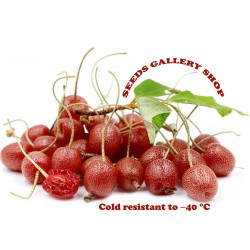
Japanese Silverberry -...
Fiyat
€2,45
(SKU: V 5)
Seeds Gallery EU,
5/
5
<!DOCTYPE html>
<html>
<head>
<meta http-equiv="Content-Type" content="text/html; charset=UTF-8" />
</head>
<body>
<h2><strong>Autumn Olive Seeds Elaeagnus umbellata, Japanese silverberry</strong></h2>
<h2><span style="color: #ff0000;"><strong>Price for Package of 5 seeds.<br /></strong></span></h2>
<div><span>Autumn olives are small in size and are round to oval in shape, growing on a deciduous shrub that can grow as tall as six meters in height. The spotted, matte skin is smooth and is painted in green, pink, and vibrant red hues. Inside, the opaque pink to red flesh is soft and juicy with one inedible seed in the center. Autumn olives are sweet, but can also be quite tart in taste depending on when they are picked in the season. In addition to the drupes, the leaves on the Autumn olive plant are oval and slightly elongated in shape, with dark green tops and grey to green undersides coated in silver scales. The leaves are also found in an alternating pattern and the edges of the leaves can be slightly rippled. The stem of the shrub is silver to golden brown with thorns and in the early spring cream to light yellow flowers can be found in clusters on the shrub. </span><br />
<h2>Seasons/Availability</h2>
<span>Autumn olives are available in the late summer through late fall. </span><br />
<h2>Current Facts</h2>
<span>Autumn olives, botanically classified as Elaeagnus umbellata, are known as a drupe, which is a fruit with an outer fleshy membrane and one single seed or pit inside. Also known as Japanese silverberry, Spreading oleaster, Umbellata oleaster, Autumn berries, and Autumn elaeagnus, Autumn olives are believed to have been given their name from their similarity in appearance to the Mediterranean olive tree even though the fruit is not an olive and is more similar to a berry. The Autumn olive plant is prolific and has the ability to thrive in poor soil, pastures, riverbanks, meadows, open woods, and even along roadsides. Originally introduced to North America to help control erosion, the plant quickly spread and has become an invasive species in specific regions of the United States. Though the plant is aggressive in its growth, it also provides a source of food for animals, and home chefs enjoy using the drupes in jams and baked goods. </span><br />
<h2>Nutritional Value</h2>
<span>Autumn olives are high in vitamins A, E, and C and are known for their high content of the antioxidant, lycopene. </span><br />
<h2>Applications</h2>
<span>Autumn olives are best suited for both raw and cooked applications such as boiling, mashing, and pureeing. They can be used in both sweet and savory applications and are commonly frozen, made into jam, fruit leather, fermented into wine, or even dried and ground into a powder. They can also be used in smoothies and drink recipes. When raw, Autumn olives pair well with yogurt and ice cream. When cooked, Autumn olives pair well with pork chops, chilled soups, and desserts such as crumbles. They will last for a couple of days when stored in a dry and well-ventilated space in the refrigerator. </span><br /><br />
<h2>Ethnic/Cultural Info</h2>
<br /><span>Autumn olives are used as a key ingredient for health and wellness in Asia. Since it is native to the mountains of Eastern Asia, autumn olives are cultivated for their powerful antioxidants and are found in daily diets in Korea, China, and Japan. Traditional uses of Autumn olives include teas, wines, jams, and ground up into powder for medicine. </span><br />
<h2>Geography/History</h2>
<span>Autumn olives originated in Asia with records in China, Japan, and Korea and have been growing since ancient times. They were then brought to the United States in 1830 and used as a solution to wildlife habitat and erosion control. Though it was an excellent solution to those needs, Autumn olives spread quickly and overtook many of the natural habitats earning itself the title of an invasive species. Today Autumn olives can also be found in Great Britain, Asia, Canada, and in the United States. </span></div>
<div></div>
<div>
<table border="1" cellspacing="0" cellpadding="0">
<tbody>
<tr>
<td colspan="2" valign="top" width="100%">
<p><span style="color: #008000;"><strong>Sowing Instructions</strong></span></p>
</td>
</tr>
<tr>
<td valign="top" nowrap="nowrap">
<p><span style="color: #008000;"><strong>Propagation:</strong></span></p>
</td>
<td valign="top">
<p><span style="color: #008000;">Seeds / Cuttings</span></p>
</td>
</tr>
<tr>
<td valign="top" nowrap="nowrap">
<p><span style="color: #008000;"><strong>Pretreat:</strong></span></p>
</td>
<td valign="top">
<p><span style="color: #008000;">Pour hot water over the seeds and put them in water 6 hours.</span></p>
</td>
</tr>
<tr>
<td valign="top" nowrap="nowrap">
<p><span style="color: #008000;"><strong>Stratification:</strong></span></p>
</td>
<td valign="top">
<p><span style="color: #008000;">about 3-4 months in a moist substrate at 2-5 ° C in a refrigerator or cold house</span></p>
</td>
</tr>
<tr>
<td valign="top" nowrap="nowrap">
<p><span style="color: #008000;"><strong>Sowing Time:</strong></span></p>
</td>
<td valign="top">
<p><span style="color: #008000;">all year round</span></p>
</td>
</tr>
<tr>
<td valign="top" nowrap="nowrap">
<p><span style="color: #008000;"><strong>Sowing Depth:</strong></span></p>
</td>
<td valign="top">
<p><span style="color: #008000;">1 cm</span></p>
</td>
</tr>
<tr>
<td valign="top" nowrap="nowrap">
<p><span style="color: #008000;"><strong>Sowing Mix:</strong></span></p>
</td>
<td valign="top">
<p><span style="color: #008000;">Coir or sowing mix + sand or perlite</span></p>
</td>
</tr>
<tr>
<td valign="top" nowrap="nowrap">
<p><span style="color: #008000;"><strong>Germination temperature:</strong></span></p>
</td>
<td valign="top">
<p><span style="color: #008000;">about 20-23 ° C.</span></p>
</td>
</tr>
<tr>
<td valign="top" nowrap="nowrap">
<p><span style="color: #008000;"><strong>Location:</strong></span></p>
</td>
<td valign="top">
<p><span style="color: #008000;">bright + keep constantly moist not wet</span></p>
</td>
</tr>
<tr>
<td valign="top" nowrap="nowrap">
<p><span style="color: #008000;"><strong>Germination Time:</strong></span></p>
</td>
<td valign="top">
<p><span style="color: #008000;">Germination takes up</span></p>
</td>
</tr>
<tr>
<td valign="top" nowrap="nowrap">
<p><span style="color: #008000;"><strong>Watering:</strong></span></p>
</td>
<td valign="top">
<p><span style="color: #008000;">Water regularly during the growing season</span></p>
</td>
</tr>
<tr>
<td valign="top" nowrap="nowrap">
<p><span style="color: #008000;"><strong> </strong></span></p>
</td>
<td valign="top">
<p><br /><span style="color: #008000;">Seeds Gallery 05.11.2012.</span></p>
</td>
</tr>
</tbody>
</table>
</div>
</body>
</html>
V 5


Dev bitki (dev meyveli)

İtalya'dan çeşitli
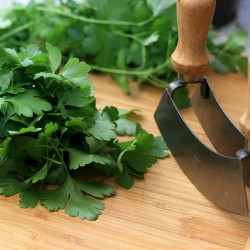
Parsley Seeds Italian Giant...
Fiyat
€1,35
(SKU: MHS 118)
Seeds Gallery EU,
5/
5
<h2><strong>Parsley Seeds Italian Giant Flat Multiannual</strong></h2>
<h2 class=""><span style="color: #ff0000;"><strong>Price for Package of 300 (1g) seeds.</strong></span></h2>
<p class="description">Also known as Italian parsley, flat-leaf parsley has dark green leaves and a pungent, sweet flavor. This parsley is best for cooking since it can withstand heat and retains its flavour better than curly parsley.</p>
<p class="description">Italian Giant is a selective plant with deeply cut, bright green leaves. Known to have better flavor than other varieties, it is increasingly popular in the kitchen and is indispensable for a huge range of cooked and salad dishes. It is the choice parsley for drying.</p>
<p class="description">Parsley can also be grown a pot to keep indoors year-round or over the winter for a supply of fresh leaves. Though technically a biennial, it is often grown as an annual herb where it cannot winter over.<br>Don’t grow in those “Parsley Pots” – the one with six holes around the side…parsley likes moisture and these containers dry out too fast, the holes in the side are small and make it difficult to water and the parsley has too big a tap root to be happy!</p>
<p><strong><span class="headings">Soil Preparation:</span> </strong></p>
<p>Parsley is a hungry plant it likes good deep soil, not too light and not acidic. Feed the chosen site well in the autumn with well-rotted manure. If you wish to harvest parsley all year round, prepare two different sites. For summer supplies, a western or eastern border is ideal because the plant needs moisture and prefers a little shade. For winter supplies a more sheltered spot will be needed in a sunny position.</p>
<div></div>
<table border="1" cellspacing="0" cellpadding="0">
<tbody>
<tr>
<td colspan="2" valign="top" width="100%">
<p><span style="color: #008000;"><strong>Sowing Instructions</strong></span></p>
</td>
</tr>
<tr>
<td valign="top" nowrap="nowrap">
<p><span style="color: #008000;"><strong>Propagation:</strong></span></p>
</td>
<td valign="top">
<p><span style="color: #008000;">Seeds</span></p>
</td>
</tr>
<tr>
<td valign="top" nowrap="nowrap">
<p><span style="color: #008000;"><strong>Pretreat:</strong></span></p>
</td>
<td valign="top">
<p><span style="color: #008000;">soak in water for 12-24 hours</span></p>
</td>
</tr>
<tr>
<td valign="top" nowrap="nowrap">
<p><span style="color: #008000;"><strong>Stratification:</strong></span></p>
</td>
<td valign="top">
<p><span style="color: #008000;">0</span></p>
</td>
</tr>
<tr>
<td valign="top" nowrap="nowrap">
<p><span style="color: #008000;"><strong>Sowing Time:</strong></span></p>
</td>
<td valign="top">
<p><span style="color: #008000;">all year round</span></p>
</td>
</tr>
<tr>
<td valign="top" nowrap="nowrap">
<p><span style="color: #008000;"><strong>Sowing Depth:</strong></span></p>
</td>
<td valign="top">
<p><span style="color: #008000;">Needs Light to germinate! Just sprinkle on the surface of the substrate + gently press</span></p>
</td>
</tr>
<tr>
<td valign="top" nowrap="nowrap">
<p><span style="color: #008000;"><strong>Sowing Mix:</strong></span></p>
</td>
<td valign="top">
<p><span style="color: #008000;">Coir or sowing mix + sand or perlite</span></p>
</td>
</tr>
<tr>
<td valign="top" nowrap="nowrap">
<p><span style="color: #008000;"><strong>Germination temperature:</strong></span></p>
</td>
<td valign="top">
<p><span style="color: #008000;">18-20 ° C</span></p>
</td>
</tr>
<tr>
<td valign="top" nowrap="nowrap">
<p><span style="color: #008000;"><strong>Location:</strong></span></p>
</td>
<td valign="top">
<p><span style="color: #008000;">bright + keep constantly moist not wet</span></p>
</td>
</tr>
<tr>
<td valign="top" nowrap="nowrap">
<p><span style="color: #008000;"><strong>Germination Time:</strong></span></p>
</td>
<td valign="top">
<p><span style="color: #008000;">20 days</span></p>
</td>
</tr>
<tr>
<td valign="top" nowrap="nowrap">
<p><span style="color: #008000;"><strong>Watering:</strong></span></p>
</td>
<td valign="top">
<p><span style="color: #008000;">Water regularly during the growing season</span></p>
</td>
</tr>
<tr>
<td valign="top" nowrap="nowrap">
<p><span style="color: #008000;"><strong> </strong></span></p>
</td>
<td valign="top">
<p><br><span style="color: #008000;"><em>Copyright © 2012 Seeds Gallery - Saatgut Galerie - Galerija semena. </em><em>All Rights Reserved.</em></span></p>
</td>
</tr>
</tbody>
</table><script src="//cdn.public.n1ed.com/G3OMDFLT/widgets.js"></script>
MHS 118 (1g)

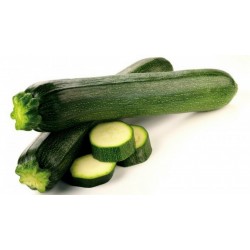
Zucchini Seeds Black Beauty
Fiyat
€2,10
(SKU: VG 59)
Seeds Gallery EU,
5/
5
<h2><strong>Zucchini Seeds Black Beauty</strong></h2>
<h2><span style="color: #ff0000;"><strong>Price for a Package of 10 seeds.</strong></span></h2>
<div>This popular, and very productive home garden and shipping squash variety matures in 50-60 days. Black beauty grows on semi-upright plants. Glossy black-green fruits average 6-8" long and 2" in diameter and are best when harvested young. <span style="font-size: 11px; line-height: 1.5em;">Tender flesh is firm creamy-white and has a fine flavor. Great eating! Average: 56 days</span></div>
<div><strong>Detailed planting instructions:</strong></div>
<div>Most summer squash grow on compact vines, in contrast to the sprawling vines of most winter squash and pumpkins. Some varieties have interesting "water marks" on their foliage. Most summer squash varieties form a compact, bushy vine.</div>
<div>Squash like warm soil and are very sensitive to frost. So don’t be in a rush to plant early in spring. Wait until danger of frost has passed and soil has warmed to about 70 F, or about 2 weeks after the last frost date.</div>
<div>Direct seed ½ to 1 inch deep into hills (which warm and drain earlier in the season) or rows. Sow 4 to 5 seeds per hill. Space hills 3 to 4 feet apart. When the plants are 2 to 3 inches tall, thin to 2 to 3 plants per hill by snipping off unwanted plants without disturbing the roots of the remaining ones. In rows, sow seeds 4 inches apart in rows 4 to 5 feet apart. Snip off plants to thin to one plant every 12 to 24 inches.</div>
<div>For extra early crops, start inside in 2- to 3-inch pots or cells 3 to 4 weeks before transplanting outside. Sow 3 or 4 seeds per pot and thin to one or two plants by snipping off the weaker plants to avoid damaging the roots of those that remain. Harden off by cutting back on water and reducing temperature before transplanting. Plant transplants out in the garden about 1 to 2 feet apart after all danger of frost has passed.</div>
<div>To hasten first harvest by as much as 2 weeks, use black plastic mulch to warm soil before direct seeding or transplanting. Early fruits are sometimes wrinkled, turn black or rot due to poor pollination.</div>
<div>At the end of the season, remove or till in vines to reduce mildew. Use row covers to protect plants early in the season and to prevent insect problems. Remove cover before flowering to allow pollination by insects or when hot weather arrives.</div>
<div>Mulching plants helps retain moisture and suppress weeds. Mounding soil around the base of the plants can discourage squash borers from laying eggs.</div>
<div>HARVESTING</div>
<div>Zucchini squash, summer crookneck and patty pan are the most common varieties of squash grown in the summer garden. These members of the squash and pumpkin families are prolific producers. They normally begin to produce about 50 days after germination, and it's important to know when to harvest to ensure that you have a steady supply, throughout the summer.</div>
<div>Expect to begin harvesting your summer varieties of squash when they are immature. Winter varieties mature on the vine and develop a tough skin to facilitate better winter storage, but summer squash allowed to grow until large and gourd-like isn't good to eat. It's best to discard them or add them to the compost pile.</div>
<div>Check your squash as soon as you notice it blooming. Squash grows very </div>
<div>fast, and some squash is ready to pick a few days after it blooms. Check your garden every 1 to 2 days after that, because once it starts to producing, it continues steadily throughout the growing season. The more you pick, the more it will produce. For this reason, you may want to consider having only a few plants of each variety, unless you intend to feed the whole neighborhood.</div>
<div>Harvest the elongated varieties of squash, such as zucchini and yellow squash, when they are about 6 inches long and 2 inches in diameter. The patty pan squash is best if picked when it's 4 inches or less in diameter. If you miss a day or two, and end up with larger squash, grate it and make bread or scoop it out and fill it with your favorite stuffing to bake.</div>
<div>Remove the squashes by cutting them from the vine with a sharp knife. They have very thin skins and bruise easily, so handle them gently. Wearing gloves is advisable, as the stalks may scratch or irritate your hands.</div>
<div>Store your squash in the refrigerator, unwashed. Moisture encourages decay of fresh vegetables, so place them in a plastic bag in the vegetable crisper. If you have a large amount, place them in a plastic bag and handle them as little as possible to prevent bruising the delicate skin. They'll stay fresh for 3 to 5 days, under the proper storage conditions.</div>
<div>Scan for summer squash enemies while you are in the garden. The cucumber beetle and the squash bug are the two most common ones to look for. The cucumber beetle usually appears late in the growing season and may damage the mature fruit. Squash bugs begin to infest the vines as soon as the blossoms appear. They are usually in large groups and can damage the plant and the mature fruit. Check with your local gardening supply store for the proper course of treatment for these pests, because the sooner you get rid of them, the healthier your squash plants will be.</div>
<div>Consider harvesting squash blossoms, which are completely edible and are used in a variety of recipes, as well as eaten raw in salads. Use your sharp knife to harvest the blossoms or pick small squash with the blossom attached for an added treat. Gather them when the petals are open, leaving about an inch of stem intact. Use them within a day because they deteriorate rapidly once picked. They may last a few days longer if you rinse them and store them in ice water in the refrigerator.</div>
<div>SAVING SEEDS</div>
<div>Although best picked and enjoyed at their smallest possible size, “zukes” must be allowed to grow quite large to produce viable seeds. Other summer (non-storage) squashes, like summer crookneck, should also be left on the vine long past complete ripeness. Then cut them open, rinse the seeds well, and dry them in an airborne strainer or on a plate (not paper).When sample seeds can be snapped in half, store them in your envelope. Compost the remains.</div>
<script type="text/javascript"></script>
VG 59 (10 S)


Sırbistan'dan Çeşit

Soğuğa ve dona dayanıklı bitki
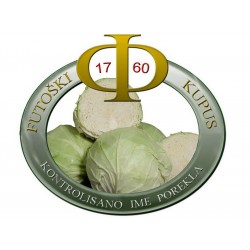
Futog Lahana Tohumları
Fiyat
€1,95
(SKU: VE 25 (1g))
Seeds Gallery EU,
5/
5
<h2><strong>Futog Lahana Tohumları</strong></h2>
<h2><span style="color: #ff0000;"><strong>200 (1g) tohum paketi için fiyat.</strong></span></h2>
<p>Futog'da, imparatoriçe Maria Theresia'nın taç giydiği çağlardan itibaren, 18. yüzyıldan itibaren lahana yetiştirilmektedir. 1760 yılından itibaren, Viyana'ya lahana ihracatını anlatan yazılı belgeler mevcuttur. Futog'da onlarca yıllık lahana yetiştiriciliği sırasında, kalite özelliklerine göre diğerlerinden farklı bir popülasyon oluşturuldu. Üreticiler her hasat yılında tohumluk için sadece belirtilen bitkileri tutmaya başlamışlardır.</p>
<p>Uzun süreli seleksiyon, taze tüketim ve ekşimede önemli olan “Futoški kupus” (Futog lahanası) adlı nüfusun oluşumundan sorumluydu.</p>
<p>Elbette bu nüfusun yaratılması, Futog bölgesinin elverişli agroekolojik koşullarına ve coğrafi konumuna katkıda bulundu. Taze Futog lahanasının yanı sıra ekşi Futog lahanasının üretildiği coğrafi bölge Futog'un kadastro topluluğudur.</p>
<p>Coğrafi bölge</p>
<p>Futog, Sırbistan'da Tuna Nehri'nin sol kıyısında, Pannonian ovalarının en verimli kesiminde bulunan yerleşim yeridir. Tuna Nehri'nin 1270 km'lik parkurunun ortasında yer alır. Özerk Voyvodina eyaletinin başkenti Novi Sad'ın batı tarafında, yaklaşık 10 km akış yukarısında yer almaktadır.</p>
<p>Coğrafi bölge</p>
<p>Spesifik coğrafi iklimin etkisi ve yetiştirme ve ekşime sırasında uygulanan geleneksel yaklaşımlar sayesinde, Futog lahanasını diğer ilgili örneklere göre taze ekşi veya farklı kılan spesifik duyusal özellikler elde edilir.</p><script src="//cdn.public.n1ed.com/G3OMDFLT/widgets.js"></script>
VE 25 (1g)


Fransa'dan çeşitli
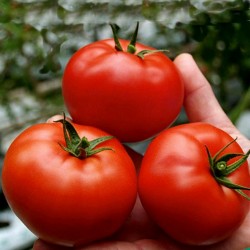
Tomato Seeds Saint Pierre
Fiyat
€4,85
(SKU: VT 116)
Seeds Gallery EU,
5/
5
<h2><span style="text-decoration: underline;"><em><strong>Tomato Seeds Saint Pierre An old traditional French tomato variety</strong></em></span></h2>
<h3><span style="color: #ff0000;"><strong>Price for Package of 20 600+ seeds. </strong></span></h3>
<div>An old traditional French tomato variety. Our TomatoFest organic tomato seeds produce hardy, indeterminate, regular-leaf tomato plants that bear moderate to high yields of medium-sized, 3-inch, red, round, tomatoes with soft, thick, meaty flesh with good to excellent flavors. A good choice for a sauce or canning tomato. Produces well in cooler growing regions and until frost.</div>
<script src="//cdn.public.n1ed.com/G3OMDFLT/widgets.js"></script>
VT 116 (600 S-2g)

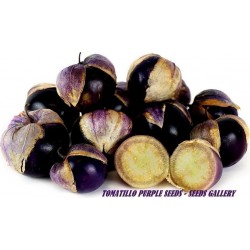
Tomatillo Seeds Physalis...
Fiyat
€2,10
(SKU: VT 163 P)
Seeds Gallery EU,
5/
5
<h2><span style="text-decoration: underline; font-size: 10pt;" class=""><em><strong>Tomatillo Seeds Physalis philadelphica Purple</strong></em></span></h2>
<h3><span style="color: #ff0000; font-size: 10pt;"><strong>Price for Package of 5 seeds.</strong></span></h3>
<div><span style="font-size: 10pt;">One of the most popular and reliable tomatillo varieties delivering heavy crops on large determinate vines of rounded berries 1 to 2 inches in diameter enclosed in the thin husk of its extended calyx. The fruit ripens to a yellow colour, and has a delicious, sweet-tart flavour. Unique garden variety that's very popular in Mexican cuisine. Matures 65-75 days from germination.</span></div>
<div><span style="font-size: 10pt;">Sow in spring 1/16 inch deep. Germination takes around 6-14 days at 65-75F.</span></div>
<div><span style="font-size: 10pt;">Transplant the seedlings when large enough to handle into 3 inch pots. Grow on under cooler conditions and when about 8 inches tall, either plant in their growing position in the greenhouse or gradually acclimatise them to outdoor conditions and plant out at least 18 inches apart in a warm and sunny spot in moist, fertile well drained soil and keep watered.</span></div>
<div><span style="font-size: 10pt;">Provide support as the plants will naturally ramble. </span></div>
<script src="//cdn.public.n1ed.com/G3OMDFLT/widgets.js"></script>
VT 163 P (5 S)


Dev bitki (dev meyveli)
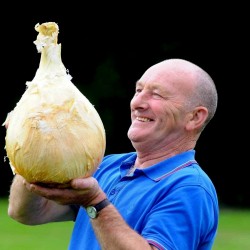
Giant Onion Seeds Robinsons...
Fiyat
€3,00
(SKU: MHS 147)
Seeds Gallery EU,
5/
5
<!DOCTYPE html>
<html>
<head>
<meta http-equiv="Content-Type" content="text/html; charset=UTF-8" />
</head>
<body>
<h2><strong>Robinsons Mammoth Giant Onion Seeds</strong></h2>
<h2><span style="color: #ff0000;"><strong>Price for Package of 8 or 15 seeds.</strong></span></h2>
<div>We are delighted to offer this seed packed by Robinsons. These seeds are of the highest quality and are ideal for shows and exhibitions. This onion has high standards of vigour and uniformity and can be grown to over 2kg in weight and 22 inches in circumference. Robinsons grow for flavour and this onion has a very sweet flavour.</div>
</body>
</html>
MHS 147 (15 S)


Soğuğa ve dona dayanıklı bitki
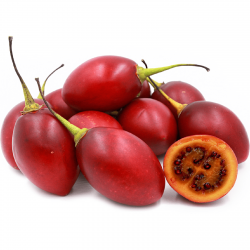
Tamarillo Seeds...
Fiyat
€2,30
(SKU: V 113)
Seeds Gallery EU,
5/
5
<h2><span style="color: #000000;"><strong>Tamarillo Seeds (Cyphomandra Betacea)</strong></span></h2>
<h2><span style="color: #ff0000;"><strong>Price for Package of 5<strong> or 10 s</strong>eeds.</strong></span></h2>
<p>Cyphomandra betacea, also known as the tree tomato, or tamarillo, is a small evergreen and fast-growing tree, that originates from several regions of South America, including Peru and Chile. This small tree has large heart-shaped leaves, fragrant flowers that are borne into clusters, red edible fruits.</p>
<p>The tomato tree is frost-hardy to 26°F to 28°F (-2°C to -3°C), and will best be grown in summer.</p>
<p>Newly planted tamarillos should be pruned to a height of 3 to 4 ft. to encourage branching. Yearly pruning thereafter is advisable to eliminate branches that have already fruited and to induce ample new shoots close to the main branches, since fruit is produced on new growth. Pruning also aids in harvesting, and if timed properly can extend the total fruiting period.</p>
<p>Hardiness Zone US 8-11 Aus 2-5 </p>
<div>
<h2><strong>WIKIPEDIA:</strong></h2>
<div><span>The </span><b>tamarillo</b><span> is a small tree or </span>shrub<span> in the </span>flowering plant<span> family </span>Solanaceae<span> (the nightshade family). It is best known as the species that bears the </span><b>tamarillo</b><span>, an egg-shaped edible </span>fruit<span>.</span><sup id="cite_ref-tamarillocom_2-0" class="reference">[2]</sup><span> It is also known as the </span><b>tree tomato</b><span>,</span><sup id="cite_ref-3" class="reference">[3]</sup><span> </span><b>tomate andino</b><span>, </span><b>tomate serrano</b><span>, </span><b>tomate de yuca</b><span>, </span><b>sachatomate</b><span>, </span><b>berenjena</b><span>, </span><b>tamamoro</b><span>, and </span><b>tomate de árbol</b><span> in South America.</span></div>
<div></div>
<div>
<h3><span class="mw-headline" id="Plant_origin_and_regions_of_cultivation">Plant origin and regions of cultivation</span></h3>
<p>The tamarillo is native to the Andes of Ecuador, Colombia, Peru, Chile, and Bolivia. Today it is still cultivated in gardens and small orchards for local production,<sup id="cite_ref-SmallFruitsReview_4-0" class="reference">[4]</sup> and it is one of the most popular fruits in these regions.<sup id="cite_ref-economicBotany_5-0" class="reference">[5]</sup> Other regions of cultivation are the subtropical areas throughout the world, such as Rwanda, South Africa, Darjeeling and Sikkim in India, Nepal, Hong Kong, China, the United States, Australia, Bhutan and New Zealand.<sup id="cite_ref-SmallFruitsReview_4-1" class="reference">[4]</sup></p>
<p>The first internationally marketed crop of tamarillos in Australia was produced around 1996, although permaculture and exotic fruit enthusiasts had increasingly grown the fruit around the country from the mid-1970s on.</p>
<p>In New Zealand, about 2,000 tons are produced on 200 hectares of land and exported to the United States, Japan<sup id="cite_ref-LostCrops_6-0" class="reference">[6]</sup> and Europe. For the export, the existing marketing channels developed for the kiwifruit are used.<sup id="cite_ref-SmallFruitsReview_4-2" class="reference">[4]</sup></p>
<p>The tamarillo is also successfully grown at higher elevations of Malaysia and the Philippines, and in Puerto Rico.<sup id="cite_ref-economicBotany_5-1" class="reference">[5]</sup> In the hot tropical lowlands, it develops only small fruits and fruit setting is seldom.</p>
<p>Prior to 1967, the tamarillo was known as the "tree tomato" in New Zealand, but a new name was chosen by the New Zealand Tree Tomato Promotions Council in order to distinguish it from the ordinary garden tomatoand increase its exotic appeal.</p>
</div>
<span style="color: #ff0000;"><span style="color: #ff0000;"><strong></strong></span></span>
<h3><span class="mw-headline" id="Plant">Plant</span></h3>
<span style="color: #ff0000;"><span style="color: #ff0000;"><strong></strong></span></span>
<div class="thumb tright">
<div class="thumbinner"><img alt="" src="https://upload.wikimedia.org/wikipedia/commons/thumb/3/31/Cyphomandra_betacea1.jpg/220px-Cyphomandra_betacea1.jpg" width="220" height="165" class="thumbimage">
<div class="thumbcaption">
<div class="magnify"></div>
Flower cluster</div>
</div>
</div>
<span style="color: #ff0000;"><span style="color: #ff0000;"><strong></strong></span></span>
<p>The plant is a fast-growing tree that grows up to 5 meters. Peak production is reached after 4 years,<sup id="cite_ref-LostCrops_6-1" class="reference">[6]</sup> and the life expectancy is about 12 years.<sup id="cite_ref-SmallFruitsReview_4-3" class="reference">[4]</sup> The tree usually forms a single upright trunk with lateral branches. The flowers and fruits hang from the lateral branches. The leaves are large, simple and perennial, and have a strong pungent smell.<sup id="cite_ref-LostCrops_6-2" class="reference">[6]</sup> The flowers are pink-white, and form clusters of 10 to 50 flowers. They produce 1 to 6 fruits per cluster. Plants can set fruit without cross-pollination, but the flowers are fragrant and attract insects. Cross-pollination seems to improve fruit set.<sup id="cite_ref-LostCrops_6-3" class="reference">[6]</sup> The roots are shallow and not very pronounced, therefore the plant is not tolerant of drought stress and can be damaged by strong winds. Tamarillos will hybridize with many other solanaceae, though the hybrid fruits will be sterile, and unpalatable in some instances.</p>
<span style="color: #ff0000;"><span style="color: #ff0000;"><strong></strong></span></span>
<h3><span class="mw-headline" id="Fruit">Fruit</span></h3>
<span style="color: #ff0000;"><span style="color: #ff0000;"><strong></strong></span></span>
<div class="thumb tright">
<div class="thumbinner"><img alt="" src="https://upload.wikimedia.org/wikipedia/commons/thumb/9/9a/Solanum_betaceum_unripe_fruits.jpg/220px-Solanum_betaceum_unripe_fruits.jpg" width="220" height="146" class="thumbimage">
<div class="thumbcaption">
<div class="magnify"></div>
Unripe fruits</div>
</div>
</div>
<span style="color: #ff0000;"><span style="color: #ff0000;"><strong></strong></span></span>
<div class="thumb tright">
<div class="thumbinner"><img alt="" src="https://upload.wikimedia.org/wikipedia/commons/thumb/0/00/Tamarillos%28janek2005%29.jpg/220px-Tamarillos%28janek2005%29.jpg" width="220" height="182" class="thumbimage">
<div class="thumbcaption">
<div class="magnify"></div>
Ripe fruits</div>
</div>
</div>
<span style="color: #ff0000;"><span style="color: #ff0000;"><strong></strong></span></span>
<p>The fruits are egg-shaped and about 4-10 centimeters long. Their color varies from yellow and orange to red and almost purple. Sometimes they have dark, longitudinal stripes. Red fruits are more acetous, yellow and orange fruits are sweeter. The flesh has a firm texture and contains more and larger seeds than a common tomato.<sup id="cite_ref-SmallFruitsReview_4-4" class="reference">[4]</sup> The fruits are very high in vitamins and iron and low in calories (only about 40 calories per fruit).</p>
<span style="color: #ff0000;"><span style="color: #ff0000;"><strong></strong></span></span>
<h3><span class="mw-headline" id="Soil_and_climate_requirements">Soil and climate requirements</span></h3>
<span style="color: #ff0000;"><span style="color: #ff0000;"><strong></strong></span></span>
<p>The tamarillo prefers subtropical climate, with rainfall between 600 and 4000 millimeters and annual temperatures between 15 and 20 °C.<sup id="cite_ref-SmallFruitsReview_4-6" class="reference">[4]</sup> It is intolerant to frost (below -2 °C) and drought stress. It is assumed that fruit set is affected by night temperatures. Areas where citrus are cultivated provide good conditions for tamarillos as well, such as in the Mediterranean climate. Tamarillo plants grow best in light, deep, fertile soils, although they are not very demanding. However, soils must be permeable since the plants are not tolerant to water-logging.<sup id="cite_ref-SmallFruitsReview_4-7" class="reference">[4]</sup> They grow naturally on soils with a pH of 5 to 8.5.</p>
<span style="color: #ff0000;"><span style="color: #ff0000;"><strong></strong></span></span>
<h3><span class="mw-headline" id="Growth">Growth</span></h3>
<span style="color: #ff0000;"><span style="color: #ff0000;"><strong></strong></span></span>
<p>Propagation is possible by both using seeds or cuttings.<sup id="cite_ref-SmallFruitsReview_4-8" class="reference">[4]</sup><sup id="cite_ref-7" class="reference">[7]</sup> Seedlings first develop a straight, about 1.5 to 1.8 meters tall trunk, before they branch out. Propagation by seeds is easy and ideal in protected environments. However, in orchards with different cultivars, cross-pollination will occur and characteristics of the cultivars get mixed up. Seedlings should be kept in the nursery until they reach a height of 1 to 1.5 meters, as they are very frost-sensitive.</p>
<span style="color: #ff0000;"><span style="color: #ff0000;"><strong></strong></span></span>
<p>Plants grown from cuttings branch out earlier and result in more shrub-like plants that are more suitable for exposed sites. Cuttings should be made from basal and aerial shoots, and should be free of pathogenic viruses. Plants grown from cuttings should be kept in the nursery until they reach a height of 0.5 to 1 meter.</p>
<span style="color: #ff0000;"><span style="color: #ff0000;"><strong></strong></span></span>
<p>The tree grows very quickly and is able to bear fruit after 1.5 to 2 years.<sup id="cite_ref-economicBotany_5-2" class="reference">[5]</sup> The plant is daylength-insensitive. The fruits do not mature simultaneously, unless the tree has been pruned. A single tree can produce more than 20 kg of fruit per year; an orchard yields in 15 to 17 tons per hectare.<sup id="cite_ref-LostCrops_6-5" class="reference">[6]</sup> One single mature tree in good soil will bear more fruit than a typical family can eat in about 3 months.</p>
<span style="color: #ff0000;"><span style="color: #ff0000;"><strong></strong></span></span>
<p>Tamarillos are suitable for growing as indoor container plants, though their swift growth, their light, water and humidity requirements and their large leaves can pose a challenge to those with limited space.</p>
<span style="color: #ff0000;"><span style="color: #ff0000;"><strong></strong></span></span>
<h3><span class="mw-headline" id="Plant_management">Plant management</span></h3>
<span style="color: #ff0000;"><span style="color: #ff0000;"><strong></strong></span></span>
<div class="thumb tright">
<div class="thumbinner"><img alt="" src="https://upload.wikimedia.org/wikipedia/commons/thumb/0/0a/Cyphomandra_betacea2.jpg/220px-Cyphomandra_betacea2.jpg" width="220" height="293" class="thumbimage">
<div class="thumbcaption">
<div class="magnify"></div>
Tamarillo tree</div>
</div>
</div>
<span style="color: #ff0000;"><span style="color: #ff0000;"><strong></strong></span></span>
<p>The tamarillo trees are adaptable and very easy to grow. However, some plant management strategies can help to stabilize and improve plant performance.</p>
<span style="color: #ff0000;"><span style="color: #ff0000;"><strong></strong></span></span>
<h4><span class="mw-headline" id="Planting">Planting</span></h4>
<span style="color: #ff0000;"><span style="color: #ff0000;"><strong></strong></span></span>
<p>Planting distances depend on the growing system. In New Zealand, with mechanized production, single row planting distances of 1 to 1.5 meters between plants and 4.5 to 5 meters between rows are recommended. In traditional growing regions such as the Andean region, plantations are much more dense, with 1.2 to 1.5 meters between plants. Dense planting can be a strategy to protect plants against wind.<sup id="cite_ref-SmallFruitsReview_4-9" class="reference">[4]</sup> On poorly drained soils, plants should be planted on ridges.</p>
<span style="color: #ff0000;"><span style="color: #ff0000;"><strong></strong></span></span>
<h4><span class="mw-headline" id="Pruning">Pruning</span></h4>
<span style="color: #ff0000;"><span style="color: #ff0000;"><strong></strong></span></span>
<p>Pruning can help to control fruit size, plant size, harvest date and to simplify the harvesting of fruits.<sup id="cite_ref-SmallFruitsReview_4-10" class="reference">[4]</sup> Cutting the tip of young plants leads to the desired branch height. Once the tree shape has been formed, pruning is reduced to the removal of old or dead wood and previously fruited branches, since branches that have already carried fruits will produce smaller fruits with lower quality the next time. Light pruning leads to medium-sized, heavy pruning to large sized fruits. Basal shoots should be removed. When plants are grown in greenhouses, pruning prevents excessive vegetative growth.</p>
<span style="color: #ff0000;"><span style="color: #ff0000;"><strong></strong></span></span>
<p>When the tree is about 1 to 1.5 metres in height, it is advisable to cut the roots on one side and lean the tree to the other (in the direction of the midday sun at about 30 to 45 degrees). This allows fruiting branches to grow all along the trunk rather than just at the top.</p>
<span style="color: #ff0000;"><span style="color: #ff0000;"><strong></strong></span></span>
<div class="thumb tright">
<div class="thumbinner"><img alt="" src="https://upload.wikimedia.org/wikipedia/commons/thumb/e/e3/Tamarillo_seedlings%2C_6_months_old.jpg/220px-Tamarillo_seedlings%2C_6_months_old.jpg" width="220" height="215" class="thumbimage">
<div class="thumbcaption">
<div class="magnify"></div>
Tamarillo seedlings, 6 months old</div>
</div>
</div>
<span style="color: #ff0000;"><span style="color: #ff0000;"><strong></strong></span></span>
<h4><span class="mw-headline" id="Mulching">Mulching</span></h4>
<span style="color: #ff0000;"><span style="color: #ff0000;"><strong></strong></span></span>
<p>Since the plants are sensitive to drought stress, mulching can help to preserve moisture in the soil.<sup id="cite_ref-LostCrops_6-6" class="reference">[6]</sup> It can also be a strategy to suppress weeds, as other soil management techniques, such as plowing, are not possible due to the shallow and sensitive root system.</p>
<span style="color: #ff0000;"><span style="color: #ff0000;"><strong></strong></span></span>
<h4><span class="mw-headline" id="Shelter">Shelter</span></h4>
<span style="color: #ff0000;"><span style="color: #ff0000;"><strong></strong></span></span>
<p>The plants have to be protected from wind. Their shallow root system does not provide enough stability, and the lateral branches are fragile and break easily when carrying fruits.<sup id="cite_ref-SmallFruitsReview_4-11" class="reference">[4]</sup></p>
<span style="color: #ff0000;"><span style="color: #ff0000;"><strong></strong></span></span>
<h4><span class="mw-headline" id="Irrigation_and_fertilization">Irrigation and fertilization</span></h4>
<span style="color: #ff0000;"><span style="color: #ff0000;"><strong></strong></span></span>
<p>To maximize and stabilize production, water and nutrient inputs should be provided when needed. The plants need continuous supply of water due to their shallow root system. Drought stress results in a decrease of plant growth, fruit size and productivity.<sup id="cite_ref-SmallFruitsReview_4-12" class="reference">[4]</sup> Recommended fertilizer rates per hectare are 170 kg of Nitrogen, 45 kg of Phosphorus and 130 to 190 kg of Potassium for intensive New Zealand production systems. Phosphorus and Potassium are applied in the beginning of the season, Nitrogen applications are distributed throughout the year.<sup id="cite_ref-SmallFruitsReview_4-13" class="reference">[4]</sup></p>
<span style="color: #ff0000;"><span style="color: #ff0000;"><strong></strong></span></span>
<h4><span class="mw-headline" id="Pest_management">Pest management</span></h4>
<span style="color: #ff0000;"><span style="color: #ff0000;"><strong></strong></span></span>
<p>The tamarillo tree is, compared to similar crops such as tomatoes, quite resistant to pests in general. Still, to reduce risk in intensive production systems, some pests have to be controlled to avoid major crop damage. To control pests, the same control methods as for other solanaceae can be used.</p>
<span style="color: #ff0000;"><span style="color: #ff0000;"><strong></strong></span></span>
<h3><span class="mw-headline" id="Harvest">Harvest</span></h3>
<span style="color: #ff0000;"><span style="color: #ff0000;"><strong></strong></span></span>
<p>Ripening of fruits is not simultaneous. Several harvests are necessary.<sup id="cite_ref-8" class="reference">[8]</sup> In climates with little annual variation, tamarillo trees can flower and set fruit throughout the year. In climates with pronounced seasons (such as New Zealand), fruits ripen in autumn. Premature harvest and ethylene induced ripening in controlled-atmosphere chambers is possible with minimal loss of fruit quality.<sup id="cite_ref-Ripening_9-0" class="reference">[9]</sup> The fragile lateral branches can break easily when loaded with fruits, so premature harvest helps to reduce this risk and allows storage of fruits up to 20 days at room temperature. A cold-water dipping process, developed by the New Zealand Department of Scientific and Industrial Research also allows further storage of 6–10 weeks.<sup id="cite_ref-SmallFruitsReview_4-14" class="reference">[4]</sup></p>
<span style="color: #ff0000;"><span style="color: #ff0000;"><strong></strong></span></span>
<h2><span class="mw-headline" id="Usage">Usage</span></h2>
<span style="color: #ff0000;"><span style="color: #ff0000;"><strong></strong></span></span>
<h3><span class="mw-headline" id="Culinary_use">Culinary use</span></h3>
<span style="color: #ff0000;"><span style="color: #ff0000;"><strong></strong></span></span>
<p>The fruit is eaten by scooping the flesh from a halved fruit. When lightly sugared and cooled, the flesh is used for a breakfast dish. Some people in New Zealand cut the fruit in half, scoop out the pulpy flesh and spread it on toast at breakfast. Yellow-fruited cultivars have a sweeter flavor, occasionally compared to mango or apricot. The red-fruited variety, which is much more widely cultivated, is more tart, and the savory aftertaste is far more pronounced. In the Northern Hemisphere, tamarillos are most frequently available from July until November, and fruits early in the season tend to be sweeter and less astringent.</p>
<span style="color: #ff0000;"><span style="color: #ff0000;"><strong></strong></span></span>
<p>They can be made into compotes, or added to stews (e.g. Boeuf Bourguignon), hollandaise, chutneys and curries. Desserts using this fruit include bavarois and, combined with apples, a strudel.</p>
<span style="color: #ff0000;"><span style="color: #ff0000;"><strong></strong></span></span>
<p>Tamarillos can be added as a secondary fermentation flavouring to Kombucha Tea for a tart and tangy taste. The fruit should be mashed and added at a ratio of 3 Tamarillos to 1 Litre of Kombucha, however great care should be taken to not allow too much carbon dioxide gas to build up in sealed bottles during secondary fermentation. The sugar content of fresh Tamarillos added to Kombucha can generate a rapid carbon dioxide production in secondary fermentation within just 48–72 hours.</p>
<span style="color: #ff0000;"><span style="color: #ff0000;"><strong></strong></span></span>
<p>In Colombia, Ecuador, Panama and parts of Indonesia (including Sumatra and Sulawesi), fresh tamarillos are frequently blended together with water and sugar to make a juice. It is also available as a commercially pasteurized purée.</p>
<span style="color: #ff0000;"><span style="color: #ff0000;"><strong></strong></span></span>
<p>In Nepal, a version of the South American fruit is decently popular. It is typically consumed as a chutney or a pickle during the autumn and winter months. It is known as <i>Tammatar</i> and <i>Ram Bheda</i>. Similar to Nepal, the Indian regions of Ooty, Darjeeling and Sikkim also consume Tamarillo.</p>
<span style="color: #ff0000;"><span style="color: #ff0000;"><strong></strong></span></span>
<p>In Ecuador, the tamarillo, known as <i>tomate de árbol</i>, is blended with chili peppers to make a hot sauce commonly consumed with local dishes of the Andean region. The sauce is simply referred to as <i>aji</i> and is present at every meal in Ecuador.</p>
<span style="color: #ff0000;"><span style="color: #ff0000;"><strong></strong></span></span>
<p>The flesh of the tamarillo is tangy and variably sweet, with a bold and complex flavor, and may be compared to kiwifruit, tomato, guava, or passion fruit. The skin and the flesh near it have a bitter taste and are not usually eaten raw</p>
<span style="color: #ff0000;"><span style="color: #ff0000;"><strong></strong></span></span>
<p>The tamarillo has been described as having a taste similar to that of a passion fruit and a piquant tomato combined.<sup class="noprint Inline-Template Template-Fact">[<i><span title="This claim needs references to reliable sources. (January 2009)">citation needed</span></i>]</sup></p>
<span style="color: #ff0000;"><span style="color: #ff0000;"><strong></strong></span></span>
<p>The red and purple types of fruits are preferred in import countries of Europe: Even though they taste more acidic, their color is favoured by consumers.<sup id="cite_ref-SmallFruitsReview_4-15" class="reference">[4]</sup></p>
<span style="color: #ff0000;"><span style="color: #ff0000;"><strong></strong></span></span>
<h3><span class="mw-headline" id="Industrial_use">Industrial use</span></h3>
<span style="color: #ff0000;"><span style="color: #ff0000;"><strong></strong></span></span>
<p>The fruits are high in pectin and therefore have good properties for preserves. However, they oxidize and lose color when not treated. Yellow fruit types are better suited to industrial use.</p>
<span style="color: #ff0000;"><span style="color: #ff0000;"><strong></strong></span></span>
<h2><span class="mw-headline" id="Prospects">Prospects</span></h2>
<span style="color: #ff0000;"><span style="color: #ff0000;"><strong></strong></span></span>
<p>Research and breeding should improve plantation management, fruit quality and postharvest treatment.<sup id="cite_ref-LostCrops_6-7" class="reference">[6]</sup> A better understanding of plant physiology, nutritional requirements of plants and fruit set mechanisms will help to improve growing systems. Breeding goals are to break seed dormancy, to improve sweetness of fruits and to increase yield. For industrial uses, little "stones" of sodium and calcium that occasionally appear in the fruit skin form a problem. Those stones have to be eliminated by breeding.</p>
<span style="color: #ff0000;"><strong><br></strong></span></div>
<div></div><script src="//cdn.public.n1ed.com/G3OMDFLT/widgets.js"></script>
V 113 (10 S)


Amerika Birleşik Devletleri'nden çeşitli
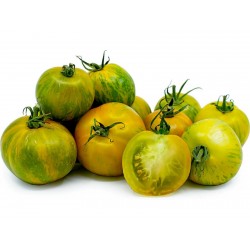
Yeşil Zebra Domates Tohumları
Fiyat
€1,95
(SKU: VT 18)
Seeds Gallery EU,
5/
5
<!DOCTYPE html>
<html>
<head>
<meta http-equiv="Content-Type" content="text/html; charset=UTF-8" />
</head>
<body>
<h2><strong>Yeşil Zebra Domates Tohumları</strong></h2>
<h2><span style="color: #ff0000;"><strong>10 tohum paketi için fiyat.</strong></span></h2>
<p>Yeşil Zebra domatesleri, canlı yeşil tenlerinin dışını çizen dikey şeritler halinde kaplıdır. Olgunlaştığında şeritler soluk yeşilden sarıya döner. Yeşil Zebra Domates yaklaşık 5 cm çapında büyür ve yuvarlak, küre benzeri bir şekle sahiptir. Yeşil Zebra'nın cildini çatlamaya karşı dayanıklıdır, düzgün bir şekilde pürüzsüzdür ve yeşil etli, sulu bir iç mekanı kapsar. Eti klasik bir domates aromasına sahiptir ve gençken tam olgunlaştıktan sonra dengeli bir tatlı tart aroması alırsa keskin ve büzücü olacaktır.</p>
<p>Yeşil Zebra domates, çiğ olarak kullanılabilir veya geleneksel domateslerin kullanıldığı çok sayıda tarifte pişirilebilir. Minyon boyutları, dörde bölünmüş ve salatalara eklenmiş, kebap üzerine eğilmiş veya oyulmuş ve doldurulmuş kullanım için idealdir. Gençken, sağlam dokuları ve tart lezzetleri pişmiş uygulamalarda kullanım için mükemmeldir. Yemek yapmak genç yeşil domateslerin asitliğini yumuşatır. Sotelenmiş, yavaş kavrulmuş veya ekmekli ve kızartılmış olabilirler. Yeşil Zebra'nın eti doyurucudur ve pişirildiğinde parçalanmaz. Yeşil Zebra gibi yeşil domatesler, turşu yapmak için turşu, füme veya pişirildiğinde de iyi çalışır. Lezzetleri balzamik, zeytinyağı, mısır unu, kekik, fesleğen, karabiber, kırmızı soğan, rezene, avokado, jalapeno, sarımsak, ızgara sığır eti, mozzarella ve krema bazlı soslarla tamamlanmaktadır. En iyi lezzet için Yeşil Zebra domateslerini oda sıcaklığında tutun, dilimlendikten sonra buzdolabında 2 güne kadar saklarlar.</p>
<p>Yeşil Zebra domatesi, yeşil ve altın şeritleriyle Wisconsin'in NFL takımı için renklendirildiği söylendiği için "Green Bay Packers" domates olarak da adlandırılabilir.</p>
<p>Yeşil Zebra domates ilk olarak 1983 yılında Everett, Tom Wagner tarafından geliştirildi. Bir bitki yetiştiricisi olarak, Wagner uzun zamandan beri her zaman yeşil domatesle ilgilenmişti. Çoğu yeşil domatesin aksine çatlamaya karşı dirençli olacak çizgili yeşil bir çeşit geliştirmeye başladı. Bu yeni domates çeşidini elde etmek için Wagner, biri Evergreen domates olan 4 yadigar çeşidini geçti. Domatesin eşsiz şeridine bir baş sallayan yeşil Zebra domatesini adlandırdı. 1993'ten 1996'ya kadar Wagner'in Tater-Mater Tohum Kataloğu'nda yer aldı ve bu süre zarfında hem bahçe hem de mutfak dünyasında ticari başarı elde etti. Bugün ağırlıklı olarak Meksika ve Kaliforniya'da yetiştiriliyor ve dağıtılıyor.</p>
</body>
</html>
VT 18 (10 S)


Dev bitki (dev meyveli)

Globo Dev Soğan Tohumları
Fiyat
€1,75
(SKU: MHS 163)
Seeds Gallery EU,
5/
5
<h2><strong>Globo Dev Soğan Tohumları</strong></h2>
<h2><span style="color: #ff0808;"><strong>20 tohumluk paket fiyatı.</strong></span></h2>
<p>Globo Dev Soğan, süper tatlı karmaşık bir tada sahip ve güzel görünen, ödüllü dev bir sergi soğanıdır! Bu saman rengi soğan, olgunluğa ulaştığında 1 kg'ın üzerinde büyüyebilir.</p>
<p>Büyük ve geniş oval biçimli soğan, soluk saman renginde bir cilde sarılır ve tadı, baharatlı bir bitişle ilahi bir şekilde tatlıdır. Çiğ yiyecekler, salatalar veya yemek pişirmek ve ayrıca depolamak için mükemmeldir.</p>
<p>Sezonları kısa olan alanlarda gerçekten geniş olabilmek için ekime erken başlanmalıdır. Vadeye kalan gün 120.</p>
MHS 163 (20 S)


Soğuğa ve dona dayanıklı bitki
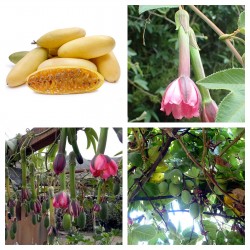
Passiflora tripartita Tohumlar
Fiyat
€4,20
(SKU: V 74 PT)
Seeds Gallery EU,
5/
5
<h2><strong>Passiflora tripartita Tohumlar</strong></h2>
<h2><span style="color: #ff0808;"><strong>5 adet tohumluk paket fiyatıdır.</strong></span></h2>
<p>Curuba, tumbo, curuba de Castilla ve tumbo serrano olarak da adlandırılan Passiflora tripartita, 2000 - 3200 metre yükseklikteki bölgelerde Peru, Bolivya, Ekvador, Kolombiya ve Brezilya'dan bir Passiflora türüdür.</p>
<p>6 m uzunluğa kadar yuvarlak, yivli, tüylü gövdeli asma. Köşeli dalları ve üç loplu yapraklı, tırtıklı, koyu yeşil, üstte sarı tüylü. 4 ila 10 cm uzunluğunda bir tüp ve çan şeklinde bir kap ile pembe çiçek.</p>
<p>Yumuşak perikarplı, olgunlaştığında sarı, 6 ila 15 cm uzunluğunda, 3.5 ila 5 cm çapında ve 100 ila 180 g ağırlığındaki dikdörtgen meyveler. Portakallı, sulu ve yenilebilir çoklu kubbeli tohumlar, meyve suları ve dondurmalar yapmak için kullanılır.</p>
<p>Muz çarkıfelek meyvesi, Venezuela'dan Bolivya'ya kadar And vadilerine özgüdür. Batı Güney Amerika'nın çeşitli kültürleri tarafından Kolomb öncesi zamanlardan beri evcilleştirildi ve yetiştirildi. Günümüzde yaygın olarak yetiştirilmektedir ve meyvesi düzenli olarak yerel pazarlarda satılmaktadır.</p>
<p>Asma, Kaliforniya'da "yumuşak yapraklı çarkıfelek çiçeği" adı altında süs bitkisi olarak yetiştirilir. Hawaii, Madeira ve Hindistan'ın Tamil Nadu Eyaletinde bir dereceye kadar yetiştirilmektedir. Meyve olgunlaştığında sarı-turuncu renktedir ve siyah tohumlu tatlı, yenilebilir turuncu renkli bir hamur içerir.</p>
<p>P. tripartita var. mollissima ve P. tarminiana yakın zamana kadar tek tür olarak kabul ediliyordu, P. mollissima.<br /><br />Eş anlamlı<br />Passiflora psilantha (Sodiro) Killip<br />Passiflora tripartita var. tripartite<br />Tacsonia psilantha Sodiro<br />Tacsonia tripartita Juss.</p>
V 74 PT


Soğuğa ve dona dayanıklı bitki

Japonya'dan çeşitli
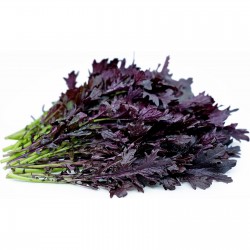
Mizuna Kırmızı Japon Hardal...
Fiyat
€1,95
(SKU: MHS 76)
Seeds Gallery EU,
5/
5
<h2 class=""><strong>Mizuna Kırmızı Japon Hardal Tohumları</strong></h2>
<h2><span style="color: #fe0000;"><strong>10 adet tohumluk paket fiyatıdır.</strong></span></h2>
'Mizuna' Japonya'da eski zamanlardan beri yetiştirilmektedir. Mizuna, 2019 yılında Uluslararası Uzay İstasyonunda başarıyla büyütüldü. 4 ila 9 arası sertlik bölgelerinde yetişir, tam güneşi veya kısmi gölgeyi, iyi drene edilmiş toprağı tercih eder ve pH'ı 6.5-7.0 arasındadır. Mikro yeşil olarak veya 20 cm ara ile yaprakları için yetiştirilebilir.<br><br>Mizuna, kuzey Çin, Kore ve Japonya'nın deniz bölgelerine özgüdür. Aynı zamanda "Kyo-Yasai" olarak adlandırılan bitkilerden biridir ve mükemmel lezzeti, bunların geleneksel olarak eski imparatorluk şehrinde, Kyoto civarında imparator için yetiştirildiğini açıklar. İkinci Dünya Savaşı'ndan sonra Amerika Birleşik Devletleri'nde ve daha sonra Avrupa'da tanıtılan Mizuna, hızla oraya yerleşti.<br><br>Dayanıklı, iki yıllık bir bitkidir. Ekiminden sonraki yıl sarı bir çiçek açar (Brassicaceae familyasının tüm temsilcileri gibi 4 yapraklı küçük çiçekler). İlk yıl, mizuna, çok sayıda uzun, ince kesilmiş, açık yeşil yapraklı, 15 ila 25 cm yüksekliğinde yoğun bir rozet geliştirir. Bu lahana hem kıvırcık hindiba hem de bir tutam karahindiba çağrıştırabilir. Mizuna'nın yaprakları gevrektir ve hafif biberli bir tada sahiptir. Bu, bazen bu lahanayı belirleyen "Japon hardalı" takma adını kesinlikle açıklıyor.<br><br>mizuna'nın mutfak kullanımları<br>Mizuna elbette salatalarda kullanılır veya ince kıyılmış, hızlı bir şekilde bir wok'a döndürülebilir veya çorba ve güveçlere kaydırılabilir.<br><br>Örneğin, dilimlenmiş yapraklar hızlıca tavada kızartılarak karides ve makarna ile servis edilebilir. Test etmek için: tabağa hindistan cevizi sütü serpin, kavrulmuş fıstık serpin.<br><br>Mizuna, kümes hayvanları veya et suyunda da pişirilebilir. Veya roka ile yaptığınız gibi pesto olarak hazırlanın.<br><br>Mizuna, popüler bir Kyoto mutfak spesiyalitesinin temelidir: Japon ördeği ve mizuna fondü.<br><br>Bir diğer “Kyo Yasai” sebzesi olan komatsuna, Japon restoranlarında ve Kore mutfağında yaygın olarak tüketilmektedir. Orada geleneksel olarak namuru'da hazırlanır: susam yağı ve kochujan'dan (biraz tatlı ve fermente edilmiş biber salçası) yapılan bir sos.<br><br>Mizuna ekimi<br> <br>Mizuna iddiasızdır: Serin kalan ancak iyi drene olan toprakları tercih ederse, herhangi bir iyi bahçe toprağında büyüyebilir. Güneşli bir yer seçin.<br><br>Hardy (-12 °C'ye kadar olan sıcaklıklara dayanıklıdır), ancak ısıya karşı hassastır, bu da erken tohum oluşumuna neden olabilir. Ayrıca, Mayıs ayı başlarında ekilebilse de, kış hasadı için yaz sonunda (Ağustos sonu) yetiştirmeyi tercih edin.<br><br>Mizuna, açık zemin fidanlıklarına veya yerinde ekilir. Bitkiler inceltilir ve 4 yapraklı olduklarında aralarında 20 cm arayla dikilir.<br><br>Rustik, sağlıklı ve güçlü olan bu sebze neredeyse hiç bakım gerektirmez: ne gübreleme ne de tedavi. Sonbahar ve kış aylarında yetiştirilir, ayrıca sulama gerektirmez. Dış sıcaklıklar çok düşerse ve birkaç gün devam ederse, rozetlerinizi bir kışlama yelkeni altında korumaya özen göstermeniz gerekir.<br><br>Mizuna ekimden 6 hafta sonra hasat edilebilir.<br><br>Ortak isim: Mizuna<br>Latince adı: Brassica rapa var japonica<br>Aile: Brassicaceae<br>Bitki Örtüsü: Bienal<br>Olgun yükseklik: 0,15 ila 0,30 m<br>Toprak tipi: Killi toprak Kireçtaşı toprak Kumlu toprak Humus
<script src="//cdn.public.n1ed.com/G3OMDFLT/widgets.js"></script>
MHS 76 (10 S)





